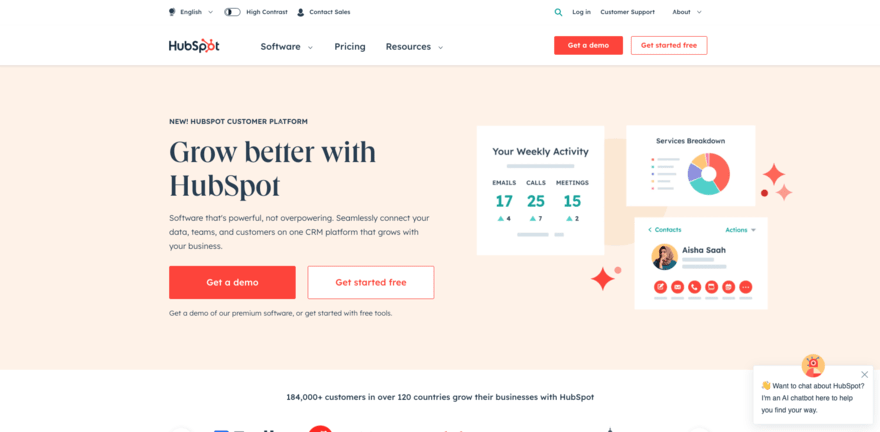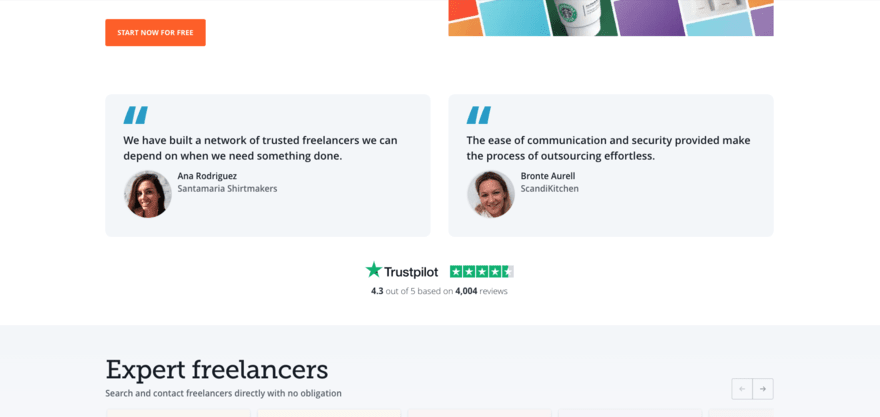Ecommerce CRO: 11 Actionable Tips to Boost Sales
If you click to purchase a product or service based on our independent recommendations and impartial reviews, we may receive a commission. Learn more
Although most website builders come with tools to help you nail your website design, investing time, money, and resources into thorough ecommerce conversion rate optimization is a smart move for businesses. Doing so can drastically increase your ROI on the marketing activities that drive visitors to your online store.
In this guide, we’re going to walk you through 11 of the best ways to optimize your conversion rates and drive greater profits.
Understanding Ecommerce Conversion Rate
An ecommerce conversion is a valuable action that someone takes on your website. Usually, this valuable action is a sale but it can also include other actions such as filling out a form, signing up for a free trial, or booking a sales call.
Here’s the ecommerce conversion rate formula:
Conversion Rate = (Total Conversions / Total Visitors) x 100
For example, let’s say you have a website that gets 1000 visitors a day, and 10 of those visitors make a purchase. Your conversion rate would be as follows:
(10/1000) x 100 = 1%
Your conversion rate is an important metric to track as it offers valuable insight into how well your website and marketing activities are optimized. For example, if your conversion rate suddenly dropped from 1% to 0.2% this would be a clear sign that something has happened that needs investigating and fixing.
Conducting a CRO audit can help you identify which changes you could carry out to make the biggest impact. For example, you may decide to test a new product page layout and find your conversion rate increases to 3% as a result, highlighting that the new layout is better than the old one.
One of the benefits of conversion rate optimization is more conversions. But what’s a good conversion rate to aim for?
In reality, there’s no one “gold standard” conversion rate, as a lot of factors come into play. However, it can be worthwhile using industry-specific averages to measure how well you’re performing compared to others in your industry. Here are a few examples:
- SaaS – 3%
- Business Services – 3.5%
- Fitness & Nutrition – 5.6%
- Education – 5.8%
- Media & Entertainment – 7.9%
- Ecommerce – 5.2%
You can find more average website conversion rates in key industries in our full report.
11 Actionable Tips for Ecommerce Conversion Rate Optimization
So, we can see that optimizing your website to increase conversion rates is important. But what are the best ways to do this?
In this section, we show you 11 of the best actionable tips for conversion rate optimization for ecommerce businesses.
1. Enhance Website Speed and Performance
Load time matters. The less time your website takes to load, the less likely your visitor is going to get frustrated and navigate away. In fact, one test by Walmart found that for every 1 second of improvement in website load time, they saw an increase in conversions by 2%!
To improve website speed you can:
- Optimize your images (compress and resize them).
- Use browser caching.
- Minify CSS and JavaScript.
- Reduce server response time.
- Limit third-party scripts.
2. Optimize Website Design and User Experience
Visitor frustration can lead to lower conversion rates. By making your website easy to navigate, you make it easier for visitors to find the content they are looking for. In turn, this streamlines the buying process and increases conversion rates.
Carefully consider your website design and user journey. Cut out unnecessary steps and remove elements such as images and text that don’t add value.
3. Implement Clear Call-to-Action

No matter how great your website is, if you don’t have a clear and concise Call-to-Action (CTA), it’s unlikely you’ll make many (if any) conversions.
Place your CTA in a clear location, tell visitors what value they gain from taking the action, and show them exactly where to go next.
4. Create High-Quality Product Pages
Optimizing your product pages is crucial to showing off your products in the best light and enticing customers to hit that “Add to Cart” button.
Use high-quality, clear images and videos to give visitors insight into the visual aspects of the product. Then create a detailed and persuasive product description that provides essential information while compelling the customer to take action.
5. Utilize Customer Reviews and Testimonials

Many online stores have countless competitors from across the globe. Using social proof such as reviews and testimonials can help your store stand out and develop the level of trust required for the potential customer to make that all-important purchase.
Automated email marketing can be a great way to drive reviews. For example, you may set up email automation in order to send a friendly email requesting a review several days after the product has been delivered.
If you’re daunted by the idea of asking for reviews, check out our guide on how to ask customers for reviews for some handy tips and tricks.
6. Offer a Seamless Checkout Process

Brands such as Amazon, with their one-click purchasing, understand the power of a seamless checkout process.
More steps mean more friction and more opportunity for a potential customer to “give up” on checking out. So, it’s important to review and optimize your checkout process regularly, removing any unnecessary steps where possible.
Aim to have your complete checkout on one page. This can limit the potential for problems and increase conversions.
7. Implement Live Chat Support

Live chat is an innovative solution for an online store, allowing you to quickly and easily answer potential customers’ questions and queries. This helps remove blockers to purchase and can drastically increase your conversion rate.
8. Personalization and Recommendation
Adapting the sales funnel to match a potential customer’s personal preferences helps you build a personalized shopping experience that’s more enjoyable and makes it easier for them to find the products that suit them.
For example, you may integrate a recommendation engine into your store which offers personalized product recommendations based on previous purchases or information they’ve provided you with.
9. Leverage Email Marketing for Abandoned Carts
Abandoned carts offer a perfect opportunity for improving your conversions. After all, the shopper has effectively told you exactly what they’re interested in buying.
You can use automated abandoned cart emails to reach out to those who have abandoned their carts and remind them of the benefits of the products they’ve chosen. You might also offer compelling offers such as a discount in order to give them that extra push to buy.
Getting the timing of your abandoned cart email is crucial. If you send it straight away, the products are likely still fresh in their mind, but send it too late and they may not even remember adding them to the cart. So, sending the email 1-2 hours after a customer has bounced off the checkout page is the best option.
Top Tip! If you’re not sure what the best time to send these emails is, why not use A/B testing to find the optimum send time?
10. A/B Testing and Experimentation
Talking of testing, A/B testing is all about testing two variations on your website in order to see which option offers the best conversion rate. When A/B testing it’s important to only select one element to change each time, otherwise you can get confused over which change has actually impacted the results.
Using this approach is a smart way to collect data that can be used to drive better conversion rates. For example, you may test aspects such as landing page layout, product images, product descriptions, and CTAs to see which variation performs best.
Learn How To Use A/B Testing in our full guide.
11. Common Pitfalls to Avoid
So far, we’ve given you some of the best ways to improve your conversion rates, but what about the common pitfalls you should avoid? Take a look at some frequent errors to sidestep below:
- Don’t overload your page with pop-ups and ads (in fact, avoid them altogether if you can)
- Don’t ignore optimizing your website for use on mobile devices
- Don’t neglect to provide adequate information on your products
- Don’t use complex checkout procedures that can confuse potential buyers.
Find Out More
For a further deepdive into Strategies To Increase Online Sales for your store, check out our separate guide, which has tips on everything from using infuencers to upselling and cross selling.
Ecommerce Conversion Rate Optimization: Summary
In this guide, we’ve walked you through 11 of the very best ways to increase your ecommerce conversion rates. Let’s take another look at these:
- Enhancing your website speed and performance
- Optimizing website design and user experience
- Using a strong call-to-action
- Creating high-quality product pages
- Utilizing social proof such as reviews and testimonials
- Developing a seamless checkout process
- Implementing live chat support
- Personalizing the customer experience
- Leveraging email marketing for abandoned carts
- Testing your website
- Avoiding common pitfalls
As the ecommerce space is fast-paced and always changing, it’s crucial to continually monitor your conversion rates, test other options and make updates over time to ensure that every element of your online store is working at its very best to score those all-important conversions!

Leave a comment